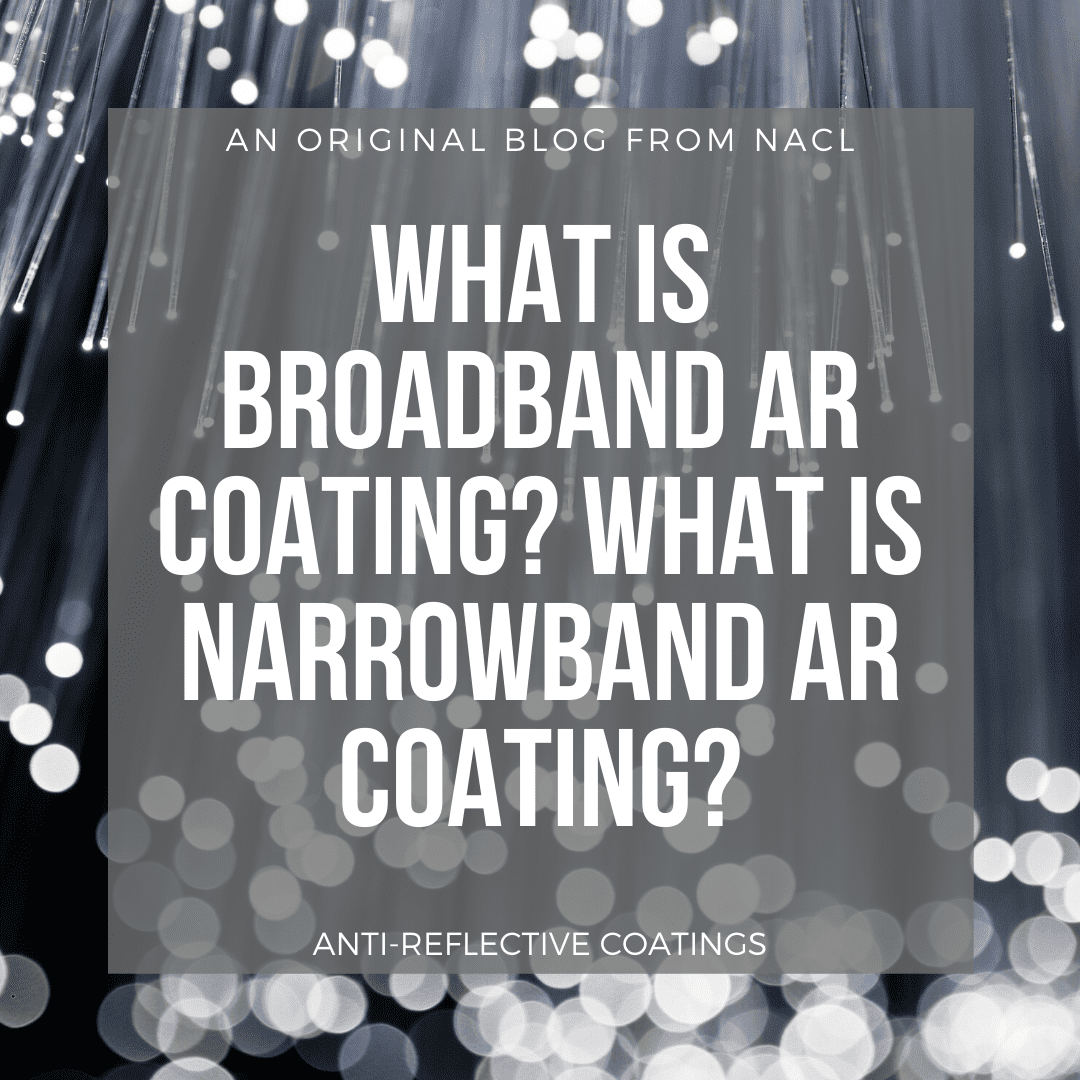What is Broadband Anti-Reflective Coating? What is Narrowband Anti-Reflective Coating?
Many times our industrial optics customers approach us and ask for either broad or narrowband antireflective coatings based on their own unique application. Fundamentally broadband and narrowband antireflective coatings serve different purposes. However there are instances where they can be substituted for each other based on the flexibility of the application and the criticality of the light transmission.
Broadband anti-reflective coatings drastically enhance the efficient light transmission of any optical substrate by reducing surface reflections over a wide wavelength rang. Broadband antireflective coatings also help to enhance image contrast in display applications. A broad wavelength range would be defined as any operating wavelength that is over 100nm.
Narrowband antireflective coatings operate in the same capacity as broadband antireflective coatings by improving efficient light transmission and reducing surface reflections. The difference between the 2 offerings is the operating wavelength range. Whereas broadband antireflective coatings are effective over a 100nm or greater wavelength range, narrowband antireflective coatings are extremely effective at a limited (5-20nm) wavelength range. The other distinguishing characteristic is the efficiency at which the coatings reduce reflection and improve transmission. A narrowband antireflective coating is capable of reducing reflection to a level of <0.2% and in some cases even lower. In the broadband scenario the effectiveness is not as great; however the extension of the operating wavelength is in some cases an acceptable trade-off.
As mentioned above, there are instances where a broadband antireflective coating can be substituted for a narrowband antireflective coating. In the spectral performance of a broadband antireflective coating there are maximum points of efficiency where the coating is reducing a very high amount of reflection. In some scenarios there are specifications where a broadband antireflective coating has a maximum efficiency point that happens to mirror the specified operating wavelength of the optical design. An example would be a broadband antireflective coating with a maximum efficiency point at 633nm that could be used in place of a narrowband antireflective coating that is specified to have maximum efficiency at 633nm. In this scenario the dual benefit afforded to the optical designer is very good reflection reduction over a long operating wavelength with extremely low reflectance at the critical operating wavelength.
This is a scenario where a collaborative effort between our customer’s optical design team and our internal coating design team can result in a well-engineered and effective optical substrate that maximizes the performance of our customer’s optical application.
North American Coating Laboratories has provided anti-reflective coated substrates for 38 years. In all cases we can work closely with you to help determine exactly which solution will be best suited for your program.






